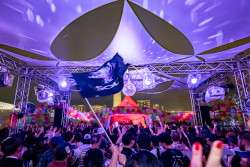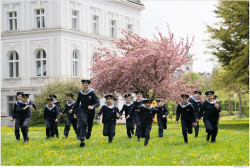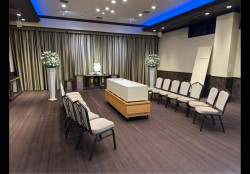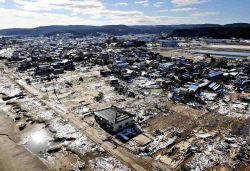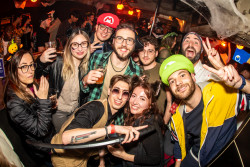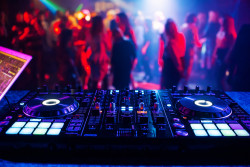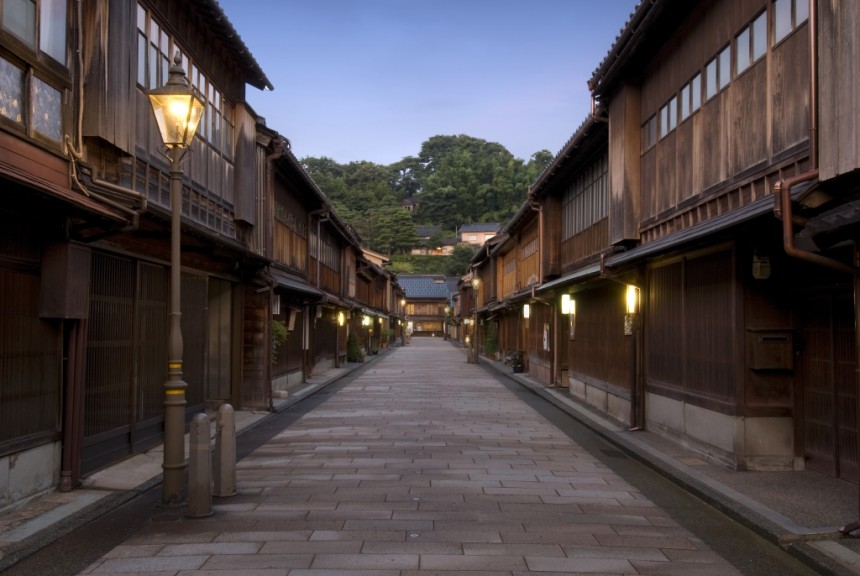
November 19, 2025
Kanazawa Travel Guide: A Taste of Old Japan
Kyoto’s charms without the hordes of tourists
While cities like Kyoto and Nara often steal the Edo spotlight, Kanazawa in the Hokuriku region has quietly preserved the charm of the era, all without the tourist crowds. Historic tea houses, narrow winding streets and one of Japan’s most beautiful landscape gardens, all in a city that blends the feel of a small town with the perks of modern conveniences.
Located along the Sea of Japan in Ishikawa Prefecture, this travel guide outlines why Kanazawa makes an ideal trip for anyone eager to taste Japan’s past without the hustle.
Getting There
Let’s start with the basics: why visit Kanazawa? Well, for starters, it’s one of the few cities in Japan that escaped damage during World War II. This means its Edo-period architecture is stunningly well-preserved. Wandering through its districts feels like stepping back in time. Add to that a bustling seafood market, top-tier museums and a rich history of traditional crafts like gold leaf. You’ll soon see why Kanazawa is a favorite for both local and international travelers looking for something different.
Kanazawa is the capital of Ishikawa Prefecture, located on the main island of Honshu. The Hokoriku Shinkansen operates a direct service from Tokyo to Kanazawa in around two hours and 30 minutes. This allows you to admire Mount Asama and scenic views of Nagano along the way.
Getting there: Kanazawa is a three-hour bullet train ride from Tokyo on the Hokuriku Shinkansen. So, it’s a manageable weekend trip.
Where to stay: For those wanting a taste of the past, a ryokan (traditional inn) is a must. Many offer kaiseki (multi-course) dinners and hot springs for a truly immersive experience.
When to go: All seasons are beautiful. Winter brings snow, so bundle up.
History in the Name
You’ll often come across the term “hyaku-man-goku” in Kanazawa, which translates to “one million koku of rice.” During the Edo period, wealth was often measured in koku. One koku was the amount of rice needed to feed one person for a year. This phrase reflects the remarkable wealth of the Kaga Domain, as the Kanazawa region was called at the time, and its ruling Maeda clan, the richest of their era.
The kokudaka system assessed land productivity to determine taxes, and the city’s name, literally meaning marsh of gold, symbolizes its prosperity. Taxes were levied on farmers based on these rice yield estimates and collected primarily in rice. This rice funded the samurai class and supported domain administration. This system also determined the wealth of the daimyo (feudal lords) and samurai stipends, securing Kanazawa’s growth and cultural development under the Maeda clan.
Despite being far from the capital, the Kaga Domain’s thriving culture and economy were influential to the shogunate in Edo. This made it a renowned center of artistry and refinement in its time.
Kenroku-en
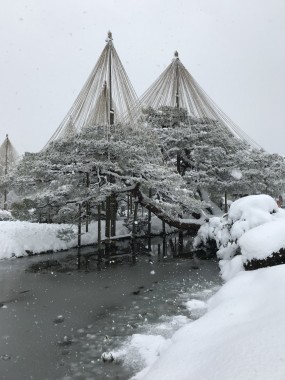
Start your visit with Kanazawa’s main attraction: Kenroku-en. Originally built as the outer garden of Kanazawa Castle during the Edo period, Kenroku-en is considered one of the three most beautiful gardens in Japan today.
The name Kenroku-en itself (“garden with six characteristics”) refers to the six attributes of a “perfect garden”. Spaciousness, serenity, venerability, scenic views, subtle design and coolness. Its vast space (25 acres) encapsulates an exceptionally diverse landscape (ponds, waterfalls, pagodas etc.)
April is one of the most popular times to visit. People worldwide come to admire its 400 cherry blossoms of approximately 40 varieties. The sakura festival and beautiful illuminations at night make it one of the best cherry blossom spots in the country.
Winter is a magical time when the garden is covered in snow. The trees are protected with conical structures to prevent them from breaking–an arrangement known as yukitsuri.
Do not miss a chance to visit one of the three traditional teahouses. Enjoy a cup of matcha tea and wagashi (Japanese sweets) with stunning views.
Omi-Cho Market
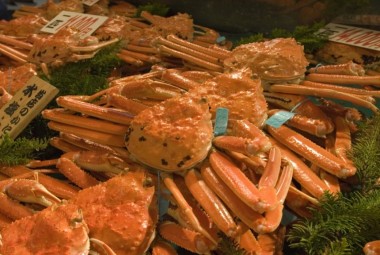
After your visit, head down to the Omi-cho Market to visit “Kanazawa’s kitchen.” Since its opening in 1721, the fresh food market has been a popular destination amongst locals and tourists. You’ll discover here the real cuisine of Kanazawa. Due to its close proximity to the Sea of Japan and high-quality water coming from the nearby Hakusan Mountains, the city is blessed with fantastic seafood and unique vegetables from the Kaga region.
The market includes over 170 stalls where you will find a great variety of fresh fish, shellfish and tsukemono (Japanese pickles). Each season offers its lot of delicacies but the most famous of all is undoubtedly the zuwai-gani snow crab. This variety of crab is only available during the winter months and is particularly sought-after for its tender meat and distinctive umami (savory) taste.
The best way to enjoy these local delicacies is to stop for lunch (or breakfast for the bravest ones) in one of the market’s restaurants. They all serve great seafood dishes including the local specialty: kaisen-don (seafood rice-bowl). Tucked at the end of a side alley, Iki-Iki Tei serve one of the best ones. They only have 10 seats so be prepared to wait. You won’t regret it.
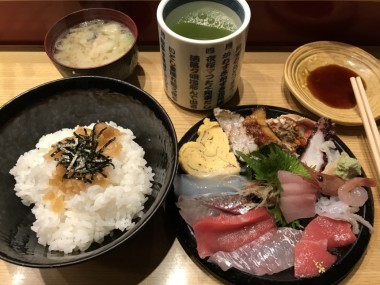
Kanazawa Arts & Crafts
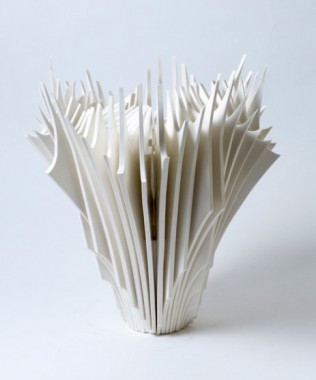
Some of the city’s most famous handicrafts include Kutani porcelain, Shikki lacquerware and Ohi Chozaemon ware. The latter has been mastering the art of pottery for over 350 years, using traditional techniques passed down from generation to generation.
The Ohi potters only use their hands and a spatula to shape the clay rather than a wheel. They also bake it at a very low temperature, giving their pottery a distinctive color and shape highly rated amongst connoisseurs.
The Ohi museum in Kanazawa will give you an excellent introduction to this local ceramic tradition. Designed by renowned Japanese architect Kengo Kuma, the adjacent gallery hosts a range of pottery for sale as well as a small café where you can enjoy a traditional tea ceremony in an original Ohi tea bowl of your choice.
The current 11th-generation Ohi Chozaemon potter and his son, Yuki Nara, use traditional techniques inherited from their ancestors to make beautiful and modern art pieces. These can be seen on the upper floor of the museum as well as various art galleries around the world.
Higashi Chaya – The Old Geisha District
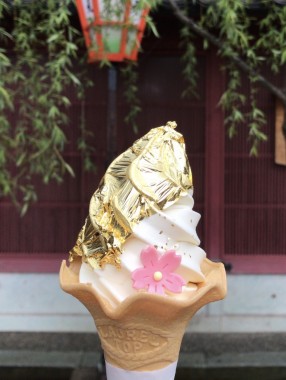
Located a short walk away from the Ohi gallery, on the bank of the Asano River, is the historical Higashi Chaya district. It transports you back in time with its maze of paved alleys. It’s dotted with beautiful wooden-fronted houses and is often compared to Kyoto’s Gion district. Hence, Kanazawa’s nickname, “Little Kyoto”.
Like Kyoto, Kanazawa was spared from bombing during World War II. Therefore, you can still admire the original chaya houses that were built over 180 years ago. Some of them host geisha performance shows in the evening.
Along with restaurants and traditional tea houses, you will find shops selling another specialty of Kanazawa: gold leaf. The city produces over 98 percent of the Kinpaku (gold leaf) used in Japan. For centuries, the Kanazawa gold leaf has been featured in numerous decorations of buildings across the country, including the famous Kinkaku-ji Golden Temple in Kyoto.
For the great joy of locals and visitors, you can also find it in all sorts of products such as tableware, cosmetics and even food. The 24-carat gold facemask and the gold-topped ice cream cone will make you feel (and look) like royalty!
The cobblestones can be a bit uneven, especially on rainy days, so comfortable walking shoes are a must. And if you’re here in the winter, don’t be surprised if there’s snow. Kanazawa’s coastal location means it gets a fair share of winter weather, which only adds to the charm.
Teahouses
One of the city’s three preserved chaya (tea house) districts, is the closest you’ll get to feeling like you’re in a Japanese woodblock print. Picture narrow, cobblestone streets lined with wooden buildings from the 1800s. Many of these former tea houses are now cafes or small boutiques selling traditional crafts and sweets.
One highlight is the Kaikaro, a tea house that still operates much like it did centuries ago. Unlike some more reserved tea houses, Kaikaro welcomes visitors letting you book a tea ceremony where you can learn about chado (the way of tea) from a professional tea master.
A Modern City
No travel guide of Kanazawa is complete without visiting the 21st Century Museum of Contemporary Art. The museum was opened in 2004 to revitalize the city’s creative energy. It was to act as a bridge between the region’s rich heritage and art of the future.
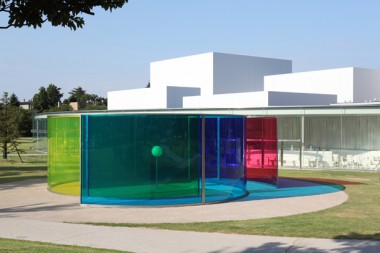
The beautiful modern structure is almost entirely made of glass and hosts a great collection of contemporary art. It’s currently celebrating its 20th anniversary.
Some of the museum’s highlights include Leandro Erlich’s famous “Swimming Pool” and Olafur Eliasson’s “Colour Activity House.” The museum also regularly features rotating exhibitions, so there’s always something fresh.
And it’s not just modern art that Kanazawa has to offer. The city is also home to the D.T. Suzuki Museum, which is dedicated to Daisetz Suzuki, a Zen Buddhist philosopher born in Kanazawa. This museum is more than just exhibits; it’s a contemplative space designed to evoke quiet reflection. It’s set around a tranquil water garden, which mirrors the minimalist beauty often associated with Zen aesthetics.
With its exceptional cultural and culinary assets and a perfect combination of tradition and modernity, Kanazawa embodies the spirit of Japan. It should definitely make it to the top of your bucket list.
Originally published May 28, 2018, by Laura Montigian. Updated January 9, 2025 by Takahiro Kanazawa for accuracy.
Discover traditional Japan:
Kiso Valley: Walk in the Woods
Exploring Mitsuiboshi Kaido: Japan’s Artisanal Heartlands
Minobu Travel Guide: Food and Craft Experiences in Japan’s Temple Town

